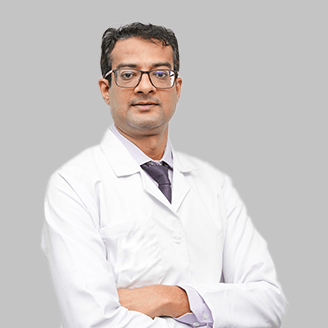-
Doctors
-
Specialities & Treatments
Centre of Excellence
Specialties
Treatments and Procedures
Hospitals & Directions HyderabadCARE Hospitals, Banjara Hills CARE Outpatient Centre, Banjara Hills CARE Hospitals, HITEC City CARE Hospitals, Nampally Gurunanak CARE Hospitals, Musheerabad CARE Hospitals Outpatient Centre, HITEC City CARE Hospitals, Malakpet
HyderabadCARE Hospitals, Banjara Hills CARE Outpatient Centre, Banjara Hills CARE Hospitals, HITEC City CARE Hospitals, Nampally Gurunanak CARE Hospitals, Musheerabad CARE Hospitals Outpatient Centre, HITEC City CARE Hospitals, Malakpet Raipur
Raipur
 Bhubaneswar
Bhubaneswar Visakhapatnam
Visakhapatnam
 Nagpur
Nagpur
 Indore
Indore
 Chh. Sambhajinagar
Chh. SambhajinagarClinics & Medical Centers
Book an AppointmentContact Us
Online Lab Reports
Book an Appointment
Consult Super-Specialist Doctors at CARE Hospitals

Male Breast Reduction
Male Breast Reduction
Gynecomastia Treatment in Hyderabad
Male breast reduction or gynecomastia is a surgical process to correct enlarged or overdeveloped breasts in men.
What is Gynaecomastia?
Gynecomastia is a condition of overdevelopment of breasts in men, making them appear enlarged. The condition can occur at any age. It can be a result of heredity, hormonal changes, obesity, or consumption of certain drugs.
Gynecomastia can cause emotional problems and discomfort and hamper self-confidence. Some men may avoid certain physical activities and intimacy to hide their condition.
The condition is characterised by:
-
Excess localised fat.
-
Infrequent excess breast skin.
-
Excess development of glandular tissues.
-
Presence of one breast (unilateral breast) or two breasts (bilateral breast).
What is gynecomastia surgery?
Gynecomastia surgery or male breast reduction reduces breast size in men and flattens the chest shape and contours. In severe gynecomastia cases, the weight of the extra breast tissue causes the breasts to stretch and sag the areola (the dark skin surrounding the skin). In such cases, the size and position of the areola can be improved surgically, and excess skin can be removed.
Symptoms of Gynecomastia
Most adult men report no symptoms of gynecomastia initially. However, with time they can observe the following signs and symptoms.
-
Pain, especially during adolescence.
-
Breast tenderness
-
Swollen breast tissue
-
Nipple irritation due to hypersensitivity against rubbing off clothes.
Types of Gynecomastia
Gynecomastia can be classified into the following types.
-
Normal- Males can experience normal gynecomastia in their adolescence or old age. The condition resolves on its own within one or two years.
-
Adult- The condition is characterised by the presence of excess fat in the glandular tissues.
-
Glandular- It is visible in bodybuilders who are addicted to steroids. The only cure for this condition is the surgical removal of glands.
-
Adolescent- It appears in boys between the ages of 9 to 14. It can resolve on its own during adolescence. However, surgery is required in severe cases.
-
Asymmetric- It is characterised by the excess development of one breast (unilateral gynecomastia).
-
Severe- It occurs due to being overweight or obese.
-
Pseudo- It is caused by excess development of adipose tissue in the breasts.
Risks
In rare cases, some of the risks include;
-
Anaesthesia risks
-
Blood clots
-
Bleeding
-
Breast asymmetry
-
Breast shape and contour irregularities
-
Changes in breast or nipple sensation
-
Deep vein thrombosis
-
Damage to deep structures such as nerves, veins, muscles, blood vessels, etc.
-
Infection
-
Fluid accumulation
-
Poor wound healing
Diagnosis of Gynecomastia
To diagnose gynecomastia, the healthcare provider will check the past health records and family history of the patient. Also, the doctor might ask the patient to go for a physical exam. Besides, some other tests to diagnose the condition include,
-
Urine tests
-
Blood tests
-
Liver function tests and hormone studies
-
A low dose X-ray scan of the breast (mammogram)
-
A small breast tissue sample to test for cancerous cells.
However, in some cases tests are not required to diagnose the condition.
Gynecomastia stages
The way to treat male breast enlargement (Gynecomastia) depends on how much extra skin and sagging there is.
Gynecomastia is divided into three grades based on the degree of breast enlargement:
- Grade I: Small enlargement with no extra skin.
- Grade IIa: Medium enlargement with no extra skin.
- Grade IIb: Medium enlargement with a bit of extra skin.
- Grade III: Big enlargement with a lot of extra skin, looking like sagging female breasts.
Treatment of gynecomastia
Gynecomastia can be treated by a surgery more specifically called male breast reduction surgery or gynecomastia surgery. At CARE Hospitals, we offer the facility of gynecomastia surgery. The surgery is performed under our well-qualified surgeons' supervision.
Typically, the procedure involves three phases.
Phase 1 Before the surgery
The doctor may ask the patient to
-
Get a lab testing or medical test for evaluation
-
Quit smoking
-
Stop taking certain medications or adjust current medications
-
Avoid taking anti-inflammatory drugs, herbal supplements, and blood thinners as they can increase bleeding
Phase 2- During the surgery
The surgical process involves the following steps.
-
Anaesthesia- Medications are inserted into the body to make the patient relaxed during the surgery. The medication options include general anaesthesia and intravenous sedation. The surgeon chooses the best option for the patient.
-
Liposuction technique- This technique is used when gynecomastia is caused by the presence of excess fatty tissues in the breast. This requires the insertion of a cannula (a thin hollow tube) through small incisions into the breast. The cannula is moved back and forth to lose the excess fat and is later removed through vacuum suction. Various liposuction techniques can be used based on the patient's conditions.
-
Excision technique- The technique is recommended when excess skin or glandular breast tissues are removed to treat gynecomastia. In this process, the glandular tissues are cut to reduce the nipple size and reposition it on the chest for a natural appearance.
-
Liposuction and excision- When both fatty and glandular tissues contribute to gynecomastia, a combination of liposuction and excision techniques are used.
How can CARE Hospitals help?
CARE Hospitals are India's fastest-growing medical centres known for providing services in different medical fields, including gynaecomastia surgery in Hyderabad. Here, we provide the complete treatment for gynecomastia, right from the diagnosis to surgery and medications. The surgery is performed by our highly experienced surgeons and other medical professionals. We use international treatment protocols and minimally invasive procedures to allow faster recovery of the patient and ensure his overall health. Further, we have a highly dedicated team of nurses and medical assistants to provide 24*7 medical aid.
FAQs
1. Why does cirrhosis lead to gynaecomastia?
- Cirrhosis can cause gynaecomastia due to several factors. In individuals with liver cirrhosis:
- There is an increased production of hormones by the adrenal glands.
- The liver's reduced ability to clear adrenal androgens from the bloodstream.
- An increase in hormone-binding globulin levels, which results in decreased levels of free testosterone in the blood.
This decline in testosterone levels contributes to the development of gynaecomastia, characterized by enlarged male breast tissue often referred to as "man boobs."
2. Can testosterone be used to treat gynaecomastia?
Yes, testosterone replacement therapy can be an effective treatment for gynaecomastia. This therapy helps maintain a balanced ratio of testosterone to estrogen in the bloodstream, consequently reducing the severity of gynaecomastia or male breast development.
3. How can one determine if they have gynaecomastia?
To identify gynaecomastia, individuals can perform a self-examination by checking the area around the nipple, either on one or both breasts. If they notice a soft, rubbery lump or experience pain in that area, it's crucial to consult a physician promptly. If there are no such symptoms, it may be pseudogynaecomastia, which results from excess body fat accumulation. A physician will diagnose based on physical examination and may request additional tests for a more accurate assessment, which may include breast ultrasonography, mammography, and evaluations for underlying conditions such as kidney, thyroid, or liver disease, testicular cancer, or tumors of the adrenal or pituitary glands.
Our Doctors
-

Dr. Annamaneni Ravi Chander Rao
MBBS, MS (General Surgery), MCh (Plastic Surgery)
Plastic Surgery
View More -

Dr. Dasari Madhu Vinay Kumar
MBBS, MS (PGI), MCh (PGIMER, CHD)
Plastic Surgery
View More -

Dr. Deepthi. A
MBBS, MS (General Surgery) , MCh (Plastic Surgery)
Plastic Surgery
View More -

Dr. Divya Sai Narsingam
MS, MCh (Plastic surgery)
Plastic Surgery
View More -

Dr. Prachir Mukati
MBBS, MS, MCh (Plastic and Reconstructive Surgery)
Plastic Surgery
View More -

Dr. Shameem Unnisa Shaikh
MBBS, MS (General Surgery)
General Surgery, Plastic Surgery
View More -

Dr. Subhash Sahu
MS, MCh
Plastic Surgery
View More
Frequently Asked Questions
Still Have a Question?

